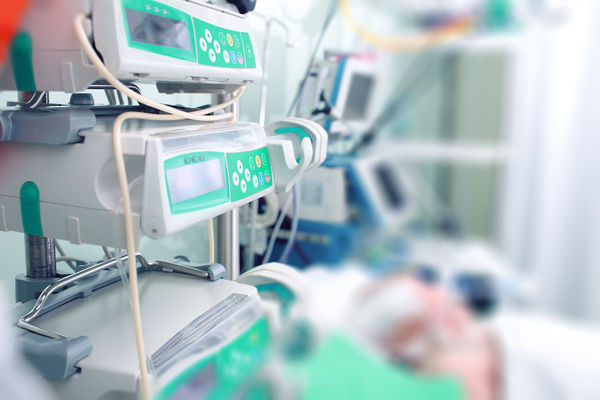Choosing Medical Power Supplies for Optimum Patient Safety

According to MedTech Europe, the alliance of European medical technology industry associations, there are over 500,000 medical technology products available today, in 16 categories as defined by the Global Medical Device Nomenclature (GMDN) Agency. These range from the simplest, such as syringes, latex gloves and spectacles, to equipment such as dentistry tools, cardiac pacemakers and MRI scanners. The number continues to grow: Medtech reports that the European Patent Office receives more applications related to medical technology than any other field.
While more and more advanced medical devices are developed, medical design standards are becoming more exacting and more complex. The 3rd edition of IEC 60601-1, the safety standard governing medical electrical equipment, is now adopted worldwide. The latest standard makes provision for the increasing diversity of medical electrical devices, for example by setting out clear differences in the level of protection expected for operators compared to that expected for patients.
Many medical electrical devices, such as equipment used in laboratory analysis, will not come into contact with patients. Other types, such as syringe pumps or heart monitors, are intended for patient contact. IEC 60601-1 3rd edition clarifies the differences in safety standards that are acceptable for each type of equipment. It is vital for engineers designing medical electrical equipment to consider these protection specifications when selecting the AC/DC power supply and DC/DC converters.
Means of Protection
One or more Means of Protection (MOP) must be incorporated to minimise the risk of electric shock. IEC 60601-1 3rd edition makes the distinction between Means of Patient Protection (MOPP) and Means of Operator Protection (MOOP). The specifications applicable to MOPP are more demanding than those for MOOP. This recognises the fact that an operator is trained, and will interact with the equipment in a different way compared to the patient. The decision whether to design the equipment to MOPP or MOOP specifications must be taken after carrying out a risk assessment according to the methodology defined in ISO 14971.
Typical MOPs in electrical equipment include insulation, air clearances, creepage distances and protective impedance. These can be designed-in in a number of ways, and implementing two protective measures (2xMOPP or 2xMOOP) provides a backup in the event that one should fail. As table 1 shows, the specifications for creepage, clearance, insulation and isolation voltage are significantly higher for 2xMOOP certification, compared to 1xMOOP, and higher still for 2xMOPP.
| Classification | Isolation | Creepage | Insulation type |
|---|---|---|---|
| 1xMOOP | 1500V AC | 2.5mm | Basic |
| 2xMOOP | 3000V AC | 5mm | Double |
| 1xMOPP | 1500V AC | 4mm | Basic |
| 2xMOPP | 4000V AC | 8mm | Double |
Table 1. IEC 60601-1 3rd edition MOP specifications.
A power supply meeting 2xMOPP standards provides the highest level of protection. On the other hand, the means of protection can be split between several components. If an AC/DC power supply meets 1xMOPP specifications, then introducing a DC/DC converter also meeting 1xMOPP could provide the required 2xMOPP protection. However, the nature of the medical industry is to use a belt and braces approach and ensure 2xMOPP in both the AC/DC and DC/DC stages.
RECOM’s RACM100 and RACM150 AC/DC power supplies have isolation voltage of 4kV and 8mm creepage distance, meeting the 2xMOPP standards for power supplies operating from 250V AC supply. RECOM also has a family of DC/DC converters that are certified to 2xMOPP: the REM3, REM6 and REM10. In combination with the 2xMOPP AC/DC supply, these help ensure the highest level of protection for patient-connected medical applications.
The converters also have extremely low patient leakage current of 2µA, which is well within the specified limit for devices designed to be connected closest to the patient’s heart. Table 2 shows the maximum leakage current for devices of type B (Body – no patient contact), type BF (body floating – patient contact) and type CF (cardiac floating – for close or direct connection to the human heart).
| Type B | Type BF | Type CF | ||||
|---|---|---|---|---|---|---|
| Leakage | Normal operation | Single-fault | Normal operation | Single-fault | Normal operation | Single-fault |
| Earth | 500µA | 1mA | 500µA | 1mA | 500µA | 1mA |
| Case | 100µA | 500µA | 100µA | 500µA | 100µA | 500µA |
| Patient | 100µA | 500µA | 100µA | 500µA | 10µA | 50µA |
Table 2. IEC 60601-1 3rd edition leakage specifications
While it is important to understand the new specifications relating to Means of Protection (MOPP and MOOP), other aspects of the power supply such as EMI performance and reliability are equally vital and must also meet applicable standards to ensure acceptance of the end product according to the applicable medical-device regulations.
Contact Dengrove
So if you’re looking for Power AC/DC Power Converters DC/DC Power Converters components for your next project, and you want a supplier with great customer service and the knowledge, experience and technical skills, then contact Dengrove today.
Call us. 01525 237731
Email us. sales@dengrove.com

